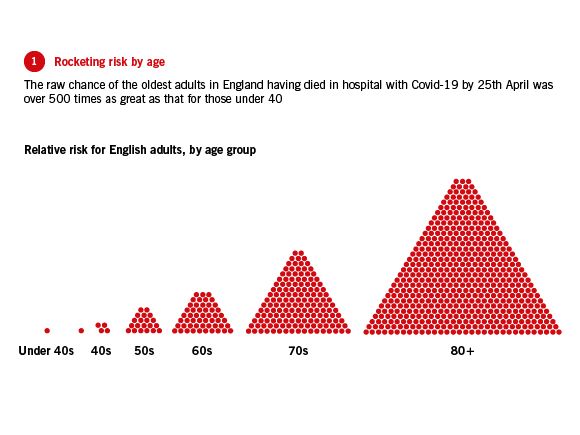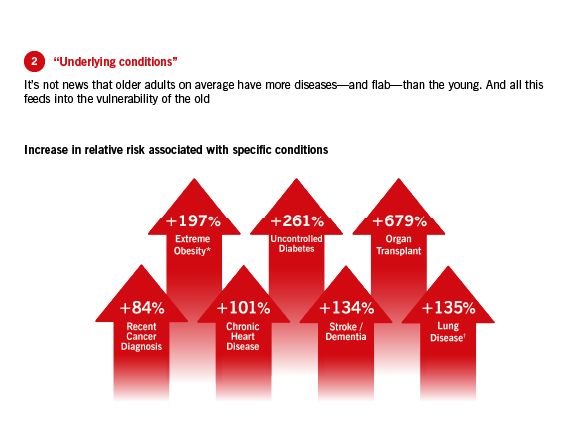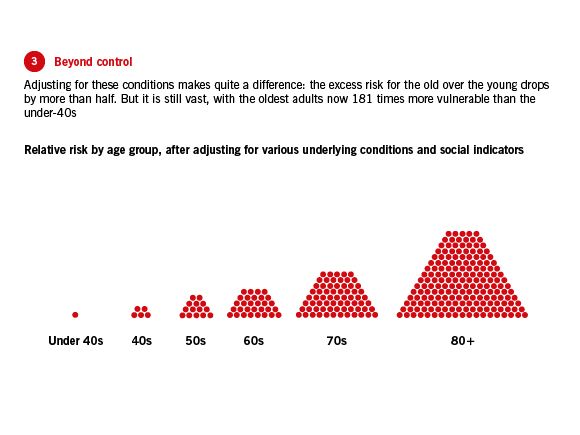As the lockdown loosens, the idea of somehow shielding “the vulnerable” is much discussed. But deciding who counts as vulnerable is fraught. In particular, many healthy and active older people bristle at the description—and especially at the idea of rules or advice that could condemn them, but not others, to stay at home.
The only case for any such discrimination must turn on relative risk. From the rst reports from Wuhan, it has been vaguely said that Covid-19 is especially lethal to the “old and frail,” but it wasn’t possible to disentangle what that meant. Was the issue age itself or the conditions which, for many, tend to come along with it?
But working through Open-SAFELY (a new secure health analytics platform for the pandemic, led by Ben Goldacre and Liam Smeeth), our team of 30 researchers has been able to crunch 17m anonymised GP records, including those of 5,000+ people who had died in hospital with Covid-19 by 25th April. In this trove of NHS data, we can pinpoint the factors that ramp up the risks.
Age is huge, with—as the rst chart shows—the over-80s being over 500 times more likely to die than the under-40s. Also highly signicant, though, are several specic conditions such as those listed on the second chart, most of which are much more common among the elderly. Even with all of them (and several others not shown here) adjusted for, chart three shows the oldest were still 181 times more likely to die of Covid-19 than the under-40s. Some of that might be accounted for by conditions we have not measured. But it’s hard to escape the conclusion that being old is, in itself, the most important “underlying condition” of the lot.



Source: OpenSAFELY “factors associated with COVID-19-related hospital death in the linked electronic health records of 17 million adult NHS patients”













